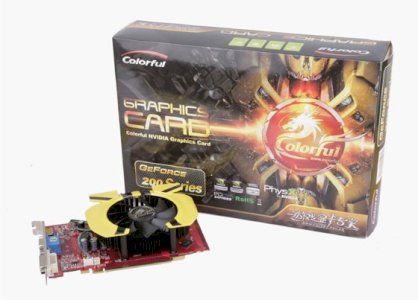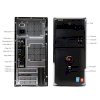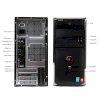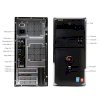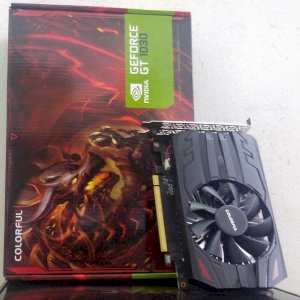Mô tả sản phẩm: Colorful GF GT240-256M DDR3 N10 (nVidia GeForce GT240, 256MB DDR3, 128bit, PCI-E 2.0)
 |
CUDA
NVIDIA® CUDA™ is a general purpose parallel computing architecture that leverages the parallel compute engine in NVIDIA graphics processing units (GPUs) to solve many complex computational problems in a fraction of the time required on a CPU. It includes the CUDA Instruction Set Architecture (ISA) and the parallel compute engine in the GPU. |
 |
PhysX
NVIDIA® PhysX® technology delivers real-time, hyper-realistic physical and environmental gaming effects in the games you want to play today and tomorrow. “Canned” reactions are a thing of the past – PhysX-powered games comes to life with blazing explosions, reactive debris, realistic water, and lifelike character motion. |
 |
PureVideo
NVIDIA PureVideo technology is the combination of a dedicated video processing core and software that delivers ultra-smooth, high-definition H.264, WMV, and MPEG-2 movies with minimal CPU utilization and low power consumption. And the high-precision subpixel processing enables videos to be scaled to any size. |
 |
GDDR3
GDDR3 (Graphics Double Data Rate 3) SGRAM is a graphics card-specific memory technology designed by ATI Technologies. It has much the same technological base as DDR2, but the power and heat dispersal requirements have been reduced somewhat, allowing for higher performance memory modules, and simplified cooling systems. |
 |
256MB
Video memory is used to hold the information necessary for a graphics card to drive a display device. In modern 3D graphics cards, the video memory may also hold 3D vector data, textures, backbuffers, overlays and GPU programs.For high end graphics cards, 1G to 2G or even more video memory is necessary to delivers all its performance power. For mid-range cards, 512M to 1G is usually enough, while for the entry level cards 256M or less is generally enough for the card performance. |
 |
HDMI
HDMI (High-Definition Multimedia Interface) is an popular interface for audiovisual equipment such as high-definition television and home theater systems. With 19 wires wrapped in a single cable that resembles a USB wire, HDMI is able to carry a bandwidth of 5 Gbps (gigabits per second). This and several other factors make HDMI much more desirable than its predecessors, component video, S-Video and composite video. |
 |
PCI-E 2.0
PCI Express (Peripheral Component Interconnect Express), officially abbreviated as PCIe or PCI-E, is a computer expansion card standard designed to replace the older PCI, PCI-X, and AGP standards. PCI Express 2.0 specification was released in 2007 and doubled the rate of PCI-E 1.0 to a data rate of 500 MB/s and a transfer rate of 5.0 GT/s. |
 |
DirectX 10.1
Microsoft DirectX is a collection of application programming interfaces (APIs) for handling tasks related to multimedia, especially game programming and video, on Microsoft platforms. DirectX 10.1 is an incremental update of DirectX 10 which mainly sets a few more image quality standards for graphics vendors, while giving developers more control over image quality. |
 |
OpenGL
OpenGL (Open Graphics Library) is the computer industry's standard application program interface (API) for defining 2-D and 3-D graphic images. |
